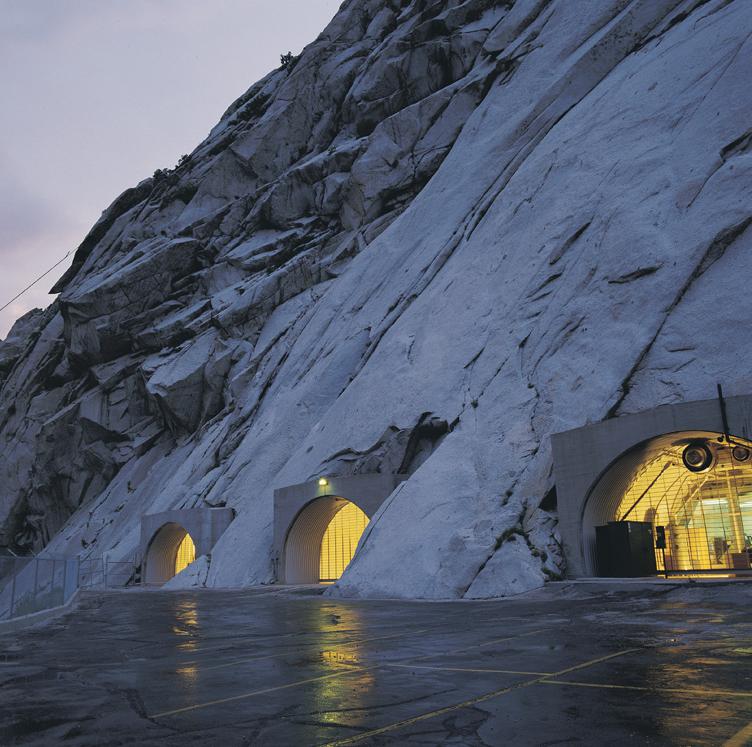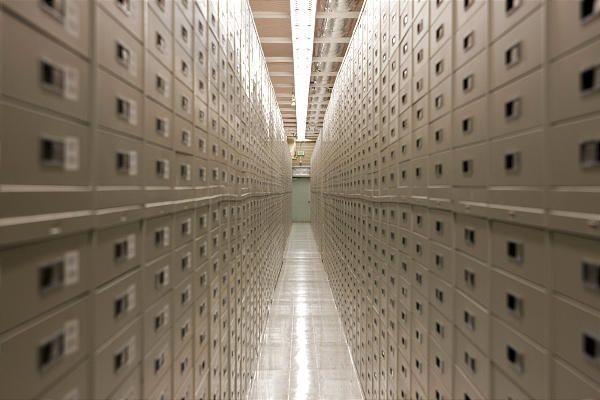Granite Mountain Records Vault
The Granite Mountain Records Vault is the world’s largest collection of genealogical records housed in a secure vault located in the mountains near Salt Lake City, Utah. The Church of Jesus Christ of Latter-day Saints completed the Granite Mountain Records Vault in 1965 to preserve and protect records of importance to the Church, including its vast collection of family history microfilms.
The vault safeguards billions of images on microfilm, microfiche, and digital media. Currently, the Church is in the process of digitizing the microfilms and making those digital records available through FamilySearch.org. The images are collected through agreements with archives, libraries, and churches from more than 100 countries. Copies of these records are given free of charge to the record custodian and on occasion, additional copies are provided to replace records that may have been lost in a natural disaster or fire.
The microfilming program was started in 1938 to help Church members have access to the records needed to identify their ancestors. After amassing more than 100,000 rolls through the next decade and a half, a permanent storage site was needed. The site was fully operational in 1965, named in May 1966, and dedicated on June 22, 1966.
Granite Mountain also is a deep-storage facility protecting materials key to church operations, leadership, and history—including “scriptures in every language published, large leather-bound temple ordinance books that were hand-kept through the 1960s, materials and minutes from presiding priesthood quorums, financial records, backup tapes and audio-visual masters from ‘Legacy’ to ‘Johnny Lingo.’”[1]
The vault is located under 700 feet of solid granite. There are three tunnels and four cross-tunnels inside the vault with over 65,000 square feet. The vault also contains a 33,000-gallon reservoir of natural spring water used for microfilm reproduction and other processes in the vault. The reinforced entrance doors weigh 9 to 14 tons each and are said to be able to withstand a nuclear blast. (The 2010 video shows four exterior tunnel entrances.)
According to the Deseret News, it's not a unique set-up. Large commercial or government perpetual storage sites are found in states like Kansas, Pennsylvania, Alabama, and Virginia. A private enterprise using similar tunnels is a Little Cottonwood Canyon neighbor.
In 2010, the Church provided a virtual tour of the facility. For security reasons, there is no public access. Brent Thompson, director of the Church History Department's preservation services (in 2010) also noted, "In our business, we don't want foreign materials—we don't want the dust off their shoes, we don't want the fibers off their clothing. It's a preservation facility. If we are marching visitors through frequently, it would be hard to maintain temperatures and keep it under control.”[2]

